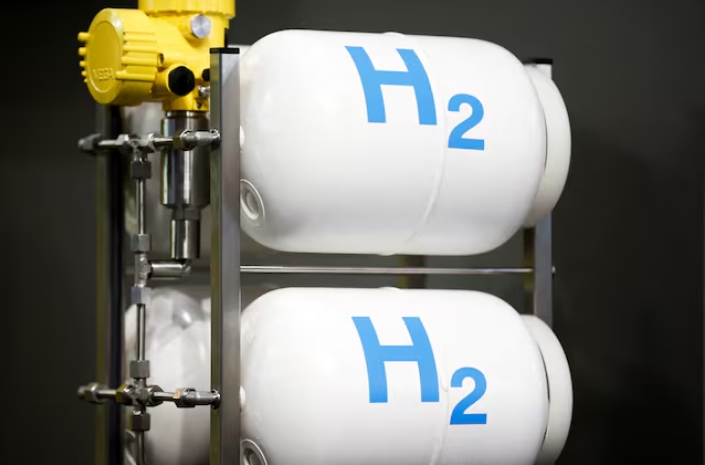The environment ministry has decided that it will no longer regulate the ash-content of coal used by thermal power plants. On Thursday, the ministry issued a notification that overturned its January 2014 regulation that made it mandatory for all coal-based power plants located 500 kilometres or more from the pit-head or coal mine to use raw or blended or beneficiated coal with no more than 34 per cent ash content.

Under the new norms, thermal power stations will be able to use coal irrespective of ash content and will liable for proper disposal of coal ash and meeting emission standards set by the Central Pollution Control Board.
The notification stresses on use of pollution control technologies by thermal power to meet the particulate matter emission standards. It has also set out norms for disposal of rejects at washeries, management of ash ponds and disposal of ash by power plants. The new regulation makes it compulsory to transport coal in covered vehicles—freight trains and trucks.
Limiting particulate pollution from coal ash has for the most part been the responsibility of the coal-based power plants. The 2014 notification was an attempt to ensure that power plants were best able to do this. Limiting the ash content of coal that could be used in power plants was an attempt to ensure lower levels of particulate pollution. The notification effectively made it mandatory for coal producers to remove impurities from the coal before transporting it to end users such as thermal power plants. This meant coal companies had to invest in setting up washeries at the pit head or close to the mine. The recent notification does away with this implicit requirement for coal producers.
To aid compliance, the environment ministry subsequently simplified the clearance process for setting up coal washeries. The ash content norm was implemented in four phases. Beginning in June 2014 with coal power plants in urban areas and ecologically sensitive areas and completed in June 2016 when it became applicable to plants located between 500 and 749 kilometres for the coal mine.
The focus of the 2014 notification was on dealing with pollution and emissions from the high ash content of India’s domestic coal. The ash-content norm together with the more stringent emission and water usage norms for coal based power plants were meant to be a demonstration of India’s effort at balancing its commitment to reducing emissions and tackling pollution while also making it clear that coal was to continue to be critical component of the energy mix.
The 2020 notification preserves this focus on tackling pollution arising from the use of coal as fuel for power plants. As in 2014, the new notification sets the norm for coal-based power plants. However, the 2014 notification by mandating a ceiling on the ash content made it incumbent on coal companies to ensure that their product met the specifications. The current notification makes no such demand of coal producers instead the onus of addressing pollution due high ash content lies with power plants.
Compliance with the 2014 order has been patchy. “Many coal producers were not washing coal. There were also instances coal washeries contributing environmental problems like pollution of water sources,” said an official involved in the discussions on the notification.
This is borne out by Comptroller and Auditor General’s report on the environmental impact of Coal India Limited and its Subsidiaries that was presented to Parliament in December 2019. The performance audit for the period 2013-14 to 2017-18 found that average ash content of the coal supplied from the Hingula, Jagannath, Basundhara (W) and IB Valley mines of Mahanadi Coalfields Limited ranged between 40.1 per cent and 43.8 per cent and supply mines of Central Coalfields Limited exceeded 34 per cent. The audit also found that rejects of Kathara washery of CCL were contaminating Damodar River.
The audit report also found that despite making coal washing implicitly mandatory, the coal washing capacity has not been sufficiently augmented. For instance, the Mahanadi Coalfields Limited had, even before the 2014 notification, plans to set up four washeries for supplying beneficiated coal to thermal plants, however so far these washeries have yet to be commissioned.
Experts point to the way the ministries of power and coal have consistently viewed environmental norms as something of an irritation and hindrance and cost enhancing exercise. It is therefore no surprise that the coal ministry argued that the COVID-19 pandemic has led to “immediate requirement of utilization of domestic coal by stimulating coal sector demand for power generation in the country”.
Given these issues and pressures, sources said that there was a consensus within the environment ministry to focus on limiting pollution arising from coal ash in thermal power plants. “Like the 2014 notification, this notification is about pollution from ash use of coal by power plants. The new rules have been framed to ensure maximum implementation. Putting the onus on power plants to address pollution on account of coal ash pollution can improve compliance,” Environment Secretary CK Mishra told ET.
Power ministry officials made the argument that the maximum ash content of 34 per cent ash in coal was pushing thermal power producers to import coal and driving up cost of power.
Niti Aayog, the government’s think tank, sought to analyse the issue from the perspective of washeries, coal mining, transportation and power plants. In its report, the Niti Aayog found that coal washing increased water use, effluent generation, adverse environmental impact of the disposal of washery rejects. It concluded that the “washing process increases the cost of power generation with no commensurate environmental advantages”. It recommended that “it may be prudent to determine and enforce the environmental and pollution norms, to be complied with by the power generators, rather than restricting the ash content in coal”.
There are considerable environmental and health benefits to reducing ash content in coal. India’s domestic coal reserves have a high ash content—up to 40 to 45 percent. As a result more coal is required to generate one kilowatt hour of electricity. This in turn means higher emissions. Reducing the ash content will mean lower amounts of coal will be burnt for every unit of electricity generated, and that would mean lower emissions of pollutants.
Coal washing is one possible way to tackle the problem of high ash content in coal. Experts say that impact of washing coal on the price of electricity is less than 10 per cent as washed coal burns longer and provides more energy. It has the added benefit of lower carbon emissions.
Another option to deal with ash is the use of flue gas desulphurisation (FGD) systems. Used along with the use of electrostatic precipitators, FGDs can address particulate pollution from coal-fired power plants caused in part due to the high ash content. It is this option that the environment ministry has now chosen to deal with the problem arising from the high ash content of domestic coal. “Those producers who were providing washed coal can continue to do so,” said Mishra explaining that coal washing will still remain a viable option for reducing ash for coal producing companies.
“The notification ties in the requirement to tackle particulate matter pollution with the SOx and NOx emission norms,” said a ministry official. The expectation is that there will be greater compliance since the pollution control board monitors the emissions.
The efficacy of adopting this route to deal with particulate pollution from coal ash hinges on the thermal power plants meeting the emission standards by the 2022 deadline. Thermal power plants have dragged their feet on these norms since first proposed in 2015. According to a recent study by the Delhi-based advocacy group and think tank Centre for Science and Environment, nearly 70 per cent of thermal power plants will miss the deadline.
For now the environment ministry appears to have found a different route to fulfil its mandate of tackling air and water pollution, What however remains unclear is how it will manage to stem particulate matter pollution from coal ash. It is this lack of surety that has led to the questioning of the efficacy of May 2020 notification.







